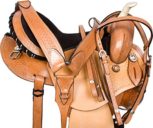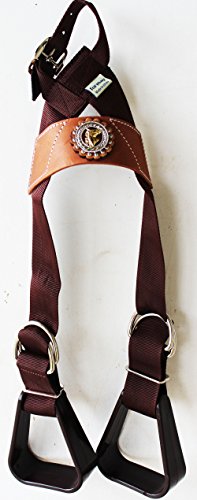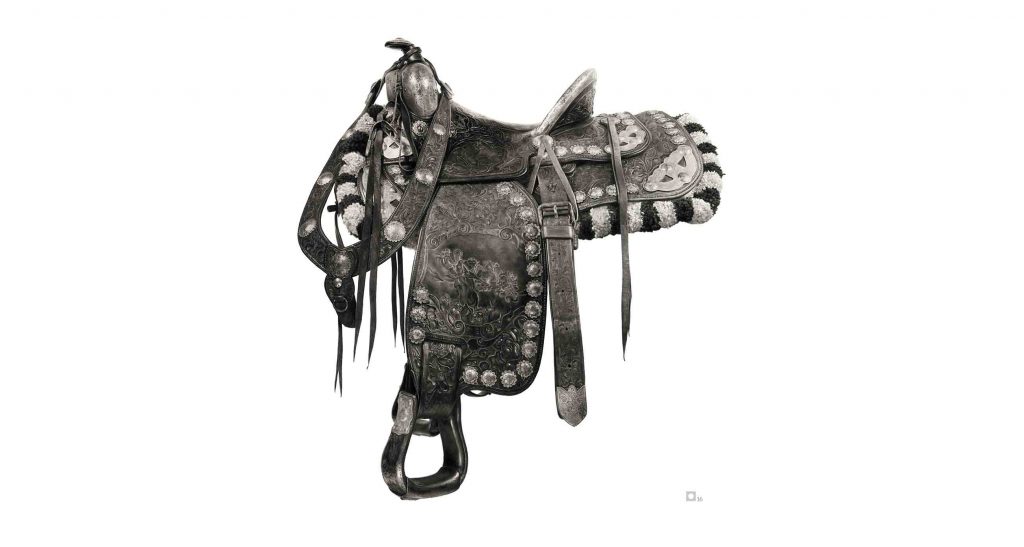Marshall Harris – Cowboys and Indians
[ad_1] Former NFL player Marshall Harris brings the details of saddles alive with graphite on Mylar. While Marshall Harris, now 62, was wandering among the horse stalls at Will Rogers Coliseum during the annual cutting horse competition eight years ago, it dawned on him what he needed to do next. His first act: professional football player. His
[ad_1]
Former NFL player Marshall Harris brings the details of saddles alive with graphite on Mylar.
While Marshall Harris, now 62, was wandering among the horse stalls at Will Rogers Coliseum during the annual cutting horse competition eight years ago, it dawned on him what he needed to do next. His first act: professional football player. His second: graphic and trade show exhibit designer. His third, he realized that day, would not be as a professor of painting and sculpture — like he’d planned with his brand-new degree from the University of the Arts in Philadelphia — but as an artist.
Saddles would be his subject. Not saddles atop horses in Western-themed riding-the-range scenes — just the saddles themselves, drawn with graphite on Mylar, which would allow him to replicate the images in rich photographic detail, right down to the correct number of stitches, as well as the marks and scars left behind by the owner.
“You can tell a lot about a saddle and its owner if you know what to look for,” he says. “For instance, looking closely at a working saddle, you can pretty accurately determine if the cowboy worked on the plains or in the Hill Country, all by the wear patterns on the cantle, the seat, the rise, and the horn.”
Harris’ saddle drawings are life-size, created on Mylar approximately 5 feet by 5 feet. Each one takes 400 hours or so to complete, or about four months. He works on one drawing at a time. First, he takes dozens of photos of the saddle, overall images and close-ups for intense detail, with his Canon Rebel, then prints the best images on 11-inch-by-17-inch glossy stock. He pieces them together like a jigsaw puzzle and tapes the compiled picture to the wall in front of his drawing table, so all he has to do when he’s working is look up to see his subject.
But before he picks up his No. 9H pencil and begins, he researches the history of the saddle itself. The saddlemaker’s mark on the saddle that earned him the 2013 Hunting Art Prize led him to a saddlery in Little Rock, Arkansas, where the woman he spoke to on the phone turned out to be the granddaughter of the man who designed and built the saddle. “She asked me, ‘Does that saddle have a whole bunch of silver conchos on the fender, and do they look like a sunflower? It was created for the 1946 [Tournament of Roses] Parade, and I watched him tool out the conchos,’ ” Harris says, recalling the conversation and his excitement over making that connection. “That doesn’t happen very often, but when it does, it makes the work magic.”
Making those connections and bridging the gap between the present and the past are what Harris loves most. His saddle drawings are now mostly commissioned works, and he has enough already photographed and cataloged to keep him busy for the next seven or eight years. “I’d rather do this than anything else,” he says. “Saddles are beautiful pieces of craftsmanship, and I’m lucky to be able to re-create that in my drawings. It’s like giving a new life to something from the past.”
Marshall Harris is represented by and is an artist-in-residence at Fort Works Art in Fort Worth, Texas. He’s currently working on a series of contemporary drawings for a solo show there in the
fall. fortworksart.com, marshallkharris.com
Photography: (all images) courtesy Marshall Harris
From the January 2019 issue.
Let’s block ads! (Why?)
[ad_2]
Source link








Comments
Comments are disabled for this post.